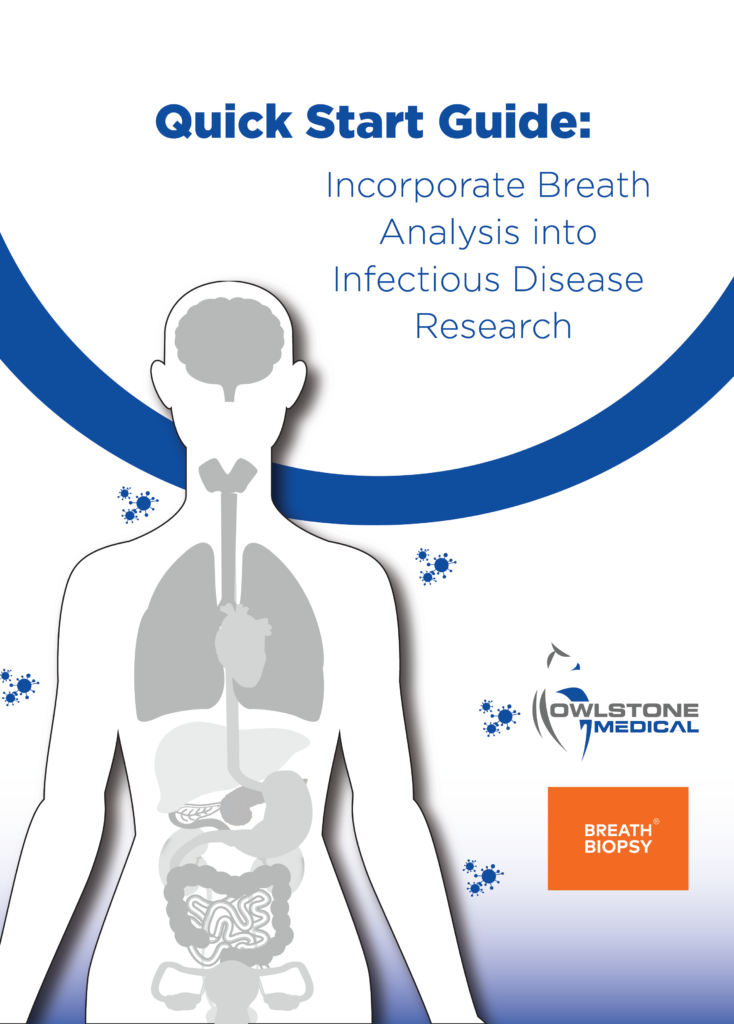Breath Analysis: A Game-Changer in Early Invasive Aspergillosis Detection?
Published on: 8 Nov 2023
Aspergillosis is a fungal infection caused by various species of the fungus Aspergillus, commonly found in decaying organic material. Whilst most individuals who inhale Aspergillus spores remain unaffected, those who are immunocompromised, or with underlying respiratory conditions can face critical illness from invasive aspergillosis with a mortality rate of between 40% and 90% (1).
The mortality rate remains high despite ongoing advances in anti-fungal treatments, in part due to difficulty in diagnosing the disease in its early stages. A positive prognosis requires treatment as early as possible, but the symptoms of aspergillosis are non-specific, with radiologic findings often associated with other diseases, cell cultures lack sensitivity and require time for incubation, and definitive diagnosis is reliant on a tissue biopsy of the lung (2). There is a clear need for a non-invasive method of reliable diagnosis of aspergillosis early. Breath analysis could be this solution.
Why is Aspergillosis so dangerous for transplant patients?
The opportunistic nature of this pathogen is of particular risk to transplant recipients, as they are one of the most vulnerable, immunosuppressed hosts. Invasive aspergillosis has a reported infection rate of up to 15% in these patients due to the immunosuppressant drugs required for successful transplantation (3). The most common species associated with invasive aspergillosis is Aspergillus fumigatus. Upon inhalation and deposition of airborne conidia (asexual spores) in the bronchioles or alveolar spaces, alveolar macrophages destroy them via phagocytosis and initiate the immune response, recruiting neutrophils that kill any germinating hyphae (4).

If the host’s immune system is diminished, pathology will vary depending on whether the patient has neutropenia or corticosteroid-induced immunosuppression. This will consist of rapid hyphal growth, causing clotting, hemorrhage, and propagation to other organs, and the development of limited pyogranulomatous infiltrates, tissue necrosis and excessive inflammation respectively (4. Those with suppressed immune systems are unable to completely fight against the infection. If left untreated, this can lead to severe damage and death.
Breath Analysis: Detecting Invasive Aspergillosis with Fungal Metabolites
Aspergillus fumigatus can synthesize at least 226 secondary metabolic products. These will have antibiotic, phytotoxic, or cytotoxic properties and serve to influence the interactions between fungi and the body (3). The unique metabolic processes of fungi mean that many of these products will not occur endogenously in human metabolism. Therefore, they could potentially act as exogenous biomarkers of invasive aspergillosis. Several distinct metabolites produced by Aspergillus fumigatus have been found to be volatile including camphene, α- and β-pinene, limonene, α- and β-trans-bergamotene, and 2-pentylfuran during in vitro testing (3,5). Measurements of α- and β-trans-bergamotene, trans-geranylacetone and 2-pentylfuran in patient’s breath have been shown to be able to distinguish those with invasive aspergillosis from healthy controls (3,5).

The Role of Breath Biopsy® in Advancing Invasive Aspergillosis Research
Following further validation, volatile metabolites like these could be used to non-invasively detect incidences of invasive aspergillosis during the early stages of disease, and monitor the progression of antifungal treatments. Future research into these prospective biomarkers is therefore vitally important in reducing the high mortality rate of the disease and improving the prognosis of patients.
The Breath Biopsy OMNI® service is focused on the analysis of clinically translatable candidate breath biomarkers. If you are interested in incorporating Breath Biopsy into your aspergillosis research, please get in touch to organize a meeting with our team.
References:
1. Swu-Jane Lin, Jennifer Schranz, Steven M. Teutsch, Aspergillosis Case-Fatality Rate: Systematic Review of the Literature, Clinical Infectious Diseases, Volume 32, Issue 3, 1 February 2001, Pages 358–366. DOI: 10.1086/318483
2. Koo S, Thomas HR, Daniels SD, Lynch RC, Fortier SM, Shea MM, Rearden P, Comolli JC, Baden LR, Marty FM. A breath fungal secondary metabolite signature to diagnose invasive aspergillosis. Clin Infect Dis. 2014 Dec 15;59(12):1733-40. DOI: 10.1093/cid/ciu725
3. Singh N, Paterson DL. Aspergillus infections in transplant recipients. Clin Microbiol Rev. 2005 Jan;18(1):44-69. DOI: 10.1128/CMR.18.1.44-69.2005
4. Dagenais TR, Keller NP. Pathogenesis of Aspergillus fumigatus in Invasive Aspergillosis. Clin Microbiol Rev. 2009 Jul;22(3):447-65. DOI: 10.1128/CMR.00055-08
5. Syhre M, Scotter JM, Chambers ST. Investigation into the production of 2-Pentylfuran by Aspergillus fumigatus and other respiratory pathogens in vitro and human breath samples. Med Mycol. 2008 May;46(3):209-15. DOI: 10.1080/13693780701753800
Quick Start Guide: Everything you need to know about how breath analysis can be used in infectious disease research
